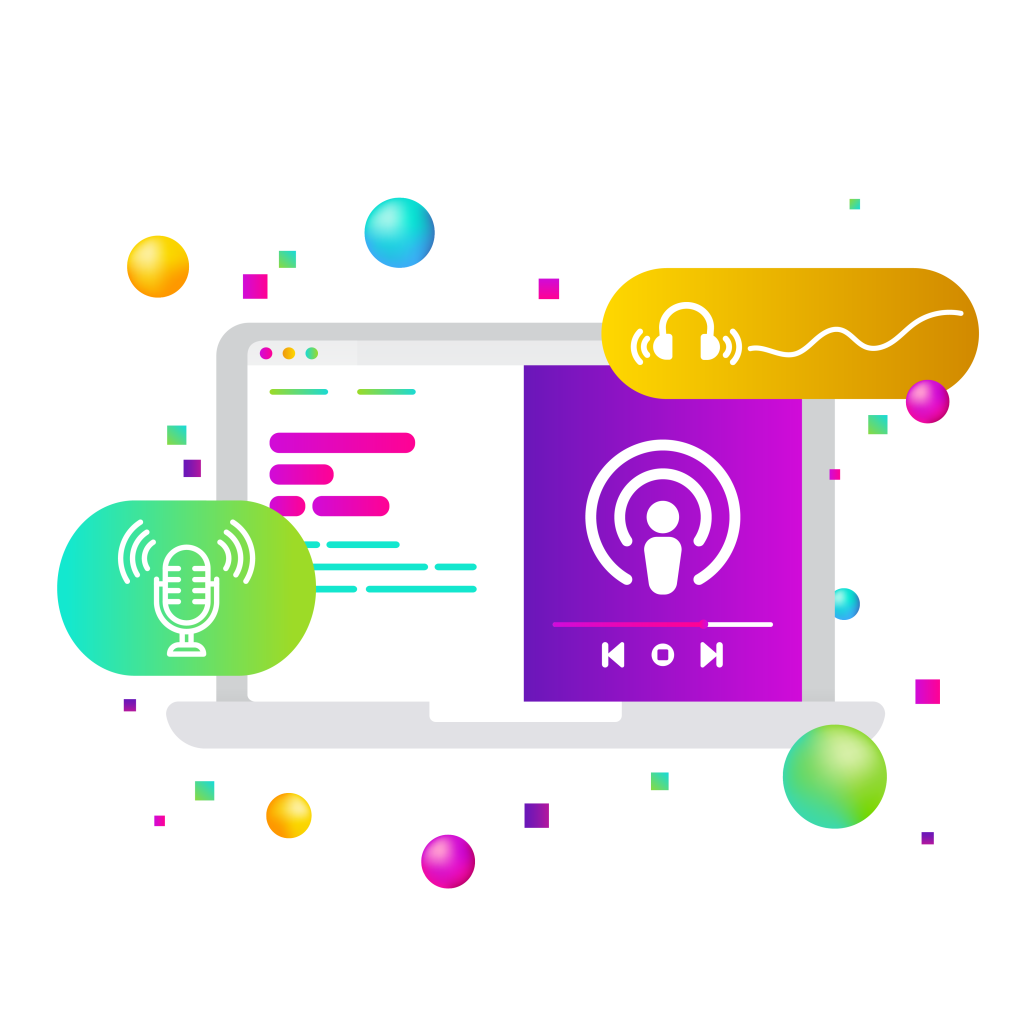
In an era dominated by visual stimuli, audio content emerges as a uniquely powerful tool in the marketing arsenal of businesses. With the rising consumption of podcasts, audiobooks, and interactive voice responses, integrating audio into marketing strategies is not just innovative but essential. This article delves into the benefits, types, and strategies of audio content, providing businesses with the knowledge to harness its potential effectively.
10 Reasons Businesses Use Audio Content
Audio content is becoming an increasingly popular medium for businesses to enhance their marketing strategies. Here are 10 compelling reasons why businesses might integrate audio content into their marketing efforts:
1. Increased Engagement
Audio content such as podcasts and audiobooks can capture the attention of audiences for longer periods compared to other mediums. The immersive nature of sound allows listeners to engage deeply with the content, enhancing their connection with the brand.
2. Personal Connection
The human voice can convey emotion and personality in ways that text and images cannot. Audio content can humanize a brand, creating a personal touch that builds stronger relationships with customers.
3. Convenience and Accessibility
Audio allows multitasking. Consumers can listen to podcasts or audiobooks while driving, working out, or performing other activities where reading text or watching videos would be impractical. This accessibility makes it a versatile marketing tool.
4. Reach a Wider Audience
Audio content is easily distributed globally via platforms like Spotify, Apple Podcasts, and Google Podcasts. This ease of distribution helps businesses reach new and diverse audiences across different regions and demographics.
5. Enhanced Brand Identity
Consistent use of voice and style in audio content can strengthen a brand’s identity. A distinctive voice can become as recognizable as a logo, enhancing brand recall.
6. Cost-Effective
Producing audio content can be less expensive than video production, which often requires more equipment and personnel. Once created, audio files are also cheaper to distribute and can offer a high ROI due to their wide potential reach.
7. Improved SEO
Search engines are increasingly indexing audio content, and with the rise of voice search, having indexed and searchable audio can significantly boost a brand’s SEO strategy. This makes brands more discoverable via conventional and voice searches.
8. Innovative Content Formats
Interactive audio content and smart uses of AI in audio applications (like personalized audio experiences) are on the rise. These innovative formats can captivate audiences in unique ways, keeping a brand at the cutting edge of technology.
9. Boost Social Media Engagement
Audio content is highly shareable on social media, especially snippets or soundbites that can pique interest and drive traffic to full episodes or tracks. This can enhance social media engagement strategies and increase followers.
10. Enhanced Customer Service
Using audio for customer service through IVR (Interactive Voice Response) systems can streamline operations and improve user experience. Well-designed audio responses can handle customer queries effectively, reducing the need for live agents and enhancing customer satisfaction.
These benefits show why audio content is not just an alternative, but a necessary addition to a comprehensive and modern marketing strategy.
Types of Audio Content for Marketing
Audio content offers a range of versatile options for businesses looking to boost their marketing strategies. Here are some of the most effective uses of audio content that businesses can adopt:
Podcasts
Industry-related Discussions: Create podcasts that discuss topics relevant to the industry the business operates in, which establishes the business as a thought leader and builds trust with its audience.
Interviews with Experts: Hosting guest speakers, such as industry leaders or influencers, can attract their followers and increase the business’s audience base.
Customer Stories and Testimonials: Share success stories and testimonials in an audio format to make the customer experience more relatable and authentic.
Audiobooks
Educational Content: Provide value to customers by converting informative content into audiobooks. This can include detailed guides, books written by the company’s leaders, or educational material relevant to their services or products.
Serialized Content: Release chapters or sections periodically to keep the audience engaged over a longer period, encouraging continuous interaction with the brand.
Voice Ads
Streaming Services Placement: Place concise and compelling audio ads on popular music and podcast streaming platforms where targeted audiences are likely to be found.
Sponsored Content: Sponsor podcasts that align with the business’s audience to subtly integrate the brand into relevant content streams.
Interactive Voice Responses (IVR)
Customer Support: Use IVR systems to provide efficient and quick responses to customer inquiries, reducing wait times and freeing up human resources for more complex issues.
Surveys and Feedback Collection: Implement IVR systems to gather customer feedback effectively, which can inform business strategies and improve customer satisfaction.
Audio Newsletters
Regular Updates: Convert traditional email newsletters into audio format, allowing subscribers to listen to updates about the business, new products, services, and other news on the go.
Audio for Social Media
Interactive Clips: Share audio clips on social media that prompt user interaction, such as quizzes, polls, or call-and-response activities.
Behind-the-Scenes Insights: Provide glimpses into the company’s operations, employee interviews, and other exclusive content in audio format to enhance transparency and humanize the brand.
Multilingual Audio Content
Offer audio content in multiple languages to cater to diverse customer bases, improving inclusivity and expanding market reach.
Audio content offers businesses a dynamic and intimate way to connect with customers, integrate seamlessly into their lives, and build lasting relationships. As we look to the future, the role of audio in marketing is set to grow, influenced by technological advancements and changing consumer behaviors. Businesses that adopt audio early and innovate boldly will likely see the greatest benefits, enhancing engagement and solidifying their brand presence in the digital age.
It is an essential component of a holistic marketing strategy.
For assistance with establishing audio content as a part of a comprehensive digital marketing strategy, including audio ads, reach out to the New Target team. We are experienced, enthusiastic, and easy to work with.



